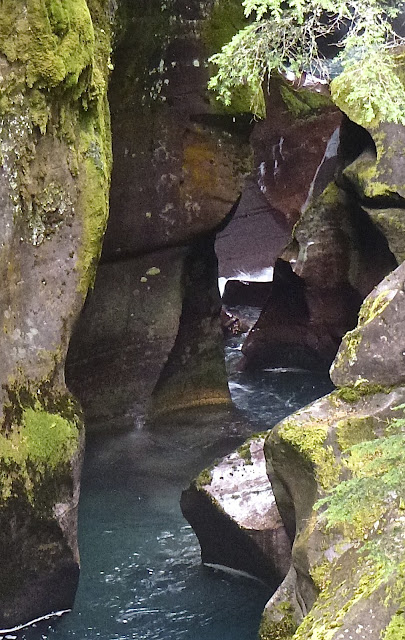We have often camped in this magnificent part of Utah; this time, instead, we stayed at a lovely B&B, the "Kiva Kottage" midway between the villages of Boulder and Escalante. We enjoyed a couple of hours watching the sun set on the cliffs and valleys around us from our terrace. There are two cottages, appropriately named Sunset (ours) and Sunrise. Today, we hiked in perfect weather to a unique falls in this part of the country.
View from our terrace looking east towards Capitol Reef National Park
The Kiva Koffeehouse and Sunset Cottage
This and the two shots below we viewed from our terrace as the sun set.
Hike to Lower Calf Creek Falls:
Janet on the trail as we near the Falls
Desert Varnish on the cliffs above Calf Creek
What is "desert varnish"? See, http://minerals.caltech.edu/FILES/VARNISH/
What is "desert varnish"? See, http://minerals.caltech.edu/FILES/VARNISH/
Lower Calf Creek Falls



















